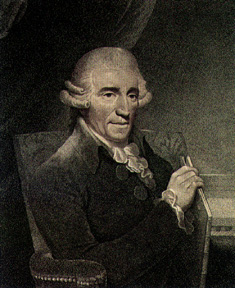Trivia
Famous trumpet works - Concertos, part 1
Prior to the invention of the valve trumpet, the trumpet was unsuited to playing melodies. In the Baroque and Classical eras, however, a number of famous works were composed that featured the trumpet as a solo instrument. These included concertos by Bach and Haydn, which are described below.
J.S. Bach: Brandenburg Concerto No. 2 in F major, BWV 1047
The second of six concertos dedicated to the Margrave of Brandenburg, this spectacular work features solos by high-pitched instruments: the trumpet, recorder, oboe, and violin. The natural trumpet, with which pitch could only be varied using lip and breath control, could only play melodious-sounding melodies at higher registers. This required the trumpeters of the day to display matchless virtuosity in the upper register (using a technique known as clarino). In the trumpet solos featured in the opening and closing movements of the work, the listener can revel in the magnificent tones of the baroque trumpet, which cannot be experienced with the modern instrument.
J. Haydn: Trumpet Concerto in E flat, Hob.:VIIe/1
This work was not in fact written for the natural trumpet. In Haydn's day the virtuoso techniques of the Baroque era were in decline and fewer concertos were being composed for trumpet. It was at this point that Anton Weidinger, a Viennese Imperial and Royal Court trumpeter with an established reputation in Europe, came to the fore. He developed a keyed trumpet that could play semitones and requested Haydn and Hummel-both outstanding contemporary composers-to compose concertos. In this work, Haydn takes full advantage of the characteristics of the keyed trumpet, making liberal use of free transitions and phrases involving chromatic scales. This work and the concerto composed by Hummel (also at Weidinger's request) are the two outstanding classical trumpet concertos.

Joseph Haydn (1732-1809)
Musical Instrument Guide:Trumpet Contents
Structure
How the Instrument is Made
Choosing an Instrument
Care and Maintenance
Trivia
- Trumpeters in Bach's time alternated between instruments with a variety of ranges when performing
- The keyed trumpet-the fruit of the evolutionary process
- Famous trumpet works - Concertos, part 1
- Famous trumpet works - Concertos, part 2
- Famous trumpet works - Solos
- Is a Flugelhorn a horn? Or a trumpet?
- The highest note a trumpet can produce
- Aida trumpets for the "Grand March"
- The secret of the trumpet's traditional tone: small impurities!?
